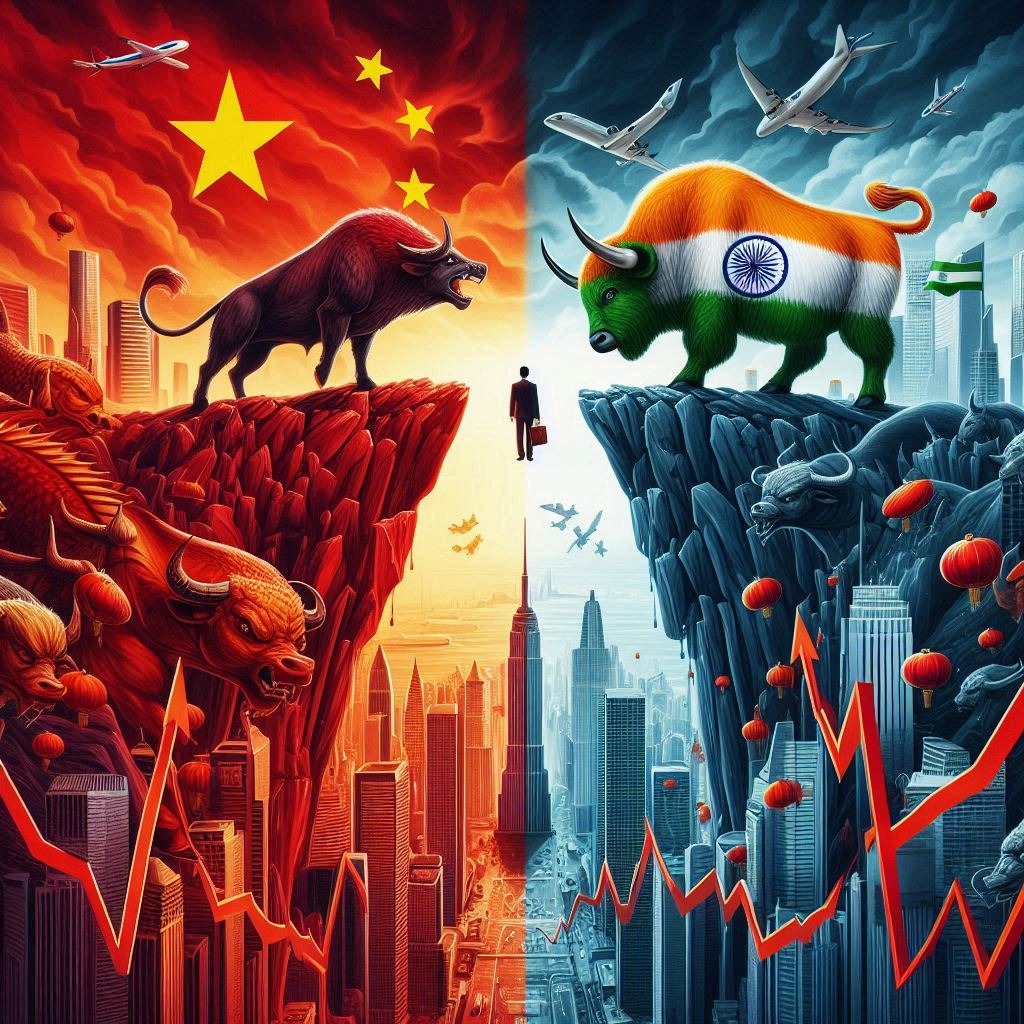China vs. India: A conundrum for stock market investors as India faces three downsides
According to Macquarie, China’s recent reversal is only an effort to de-risk and underwrite growth ambitions, with policies still lacking support from the standpoints of real estate and consumer.
Weakening GDP growth, high EPS expectations of 17%, and the historically highest PE multiple of 23 times are the triple negatives facing Indian stocks.
India vs. China is still the most crucial decision facing emerging market (EM) investors, and it’s getting more difficult to make, according to Macquarie’s most recent strategy paper. However, it feels that Chinese stocks are primarily a trading, rather than an investment, call given the structural problems with China. “India is,” it said.
It made the case that India’s stocks are dealing with three negative factors: declining GDP growth, high expectations for earnings per share of 17%, and historically high multiples of 23 times.
From a flow viewpoint, there have been significant $7 billion net withdrawals of foreign equities over the past two weeks, despite the fact that domestic liquidity is still increasing.
Last but not least, MSCI India continues to sit at a 70 percent cumulative four-year outperformance rate, notwithstanding some recent erosion. Second, investors anticipate that China will eventually implement significant stimulus measures that will support growth in 2024 and beyond, according to the overseas brokerage.
Some investors think China will resolve its long-standing structural issues. At the absolute least, they anticipate that China will be able to set the floor for both nominal and real GDP, assisting corporations in achieving EPS forecasts that are comparable to the present range of 10–11%.
Macquarie stated that the Chinese government is likely to downplay political, geopolitical, and regulatory challenges because of the belief that it is finally concentrating on the economy. Lastly, MXCN is still very inexpensive (10 times) and has a four-year cumulative underperformance of 35%. It would be simple to argue that China’s current recovery should continue under normal conditions. However, Macquarie noted that these were not typical instances.

China has issues as well.
First, according to Macquarie, investors shouldn’t anticipate a significant worldwide acceleration to boost China’s exports.
The contrary is true, as a hostile trade and investment environment—from stalling trade elasticities to an increasing wave of tariff and protectionary measures—amplify sub-standard global growth of 2.5%.
“This is poor news for China, but India prefers a “Twilight” of not too strong or weak growth, and it is not subject to the same pressures,” Macquarie stated.
Second, with policies still being inadequate from the standpoints of consumption and real estate, the international brokerage does not see China’s recent shift as much more than an effort to de-risk and underwrite growth ambitions.
Without addressing the underlying problems of excessive savings and reliance on investment and exports, it views the recent actions as a modest cleanup of LGFVs and local debt, some stabilization of real estate, and slight adjustments to consumption and welfare expenditures.
India, on the other hand, will keep increasing its capital and workforce while boosting productivity. Even if 8% growth is unattainable due to the need for increased domestic productivity and capital efficiency, the economy should develop at 6-7 percent, which would indicate a consistent double-digit nominal GDP growth (compared to 4% for China), according to Macquarie.
Furthermore, Macquarie anticipates that domestic corporations would generate significantly higher return on equity (ROEs) of 16–17% as opposed to 9% for Chinese corporations.
Thus, the conundrum.
Even while fundamental problems persist, Macquarie stated that it is entirely likely that more announcements might boost China’s stocks. However, this prediction still strongly favors India and is primarily a trading call rather than an investing one.
Disclaimer: The above article is for educational and news purposes, this is not a buying or selling recommendation. TraderPulse recommends that users to check with certified experts before making any investment decisions.


